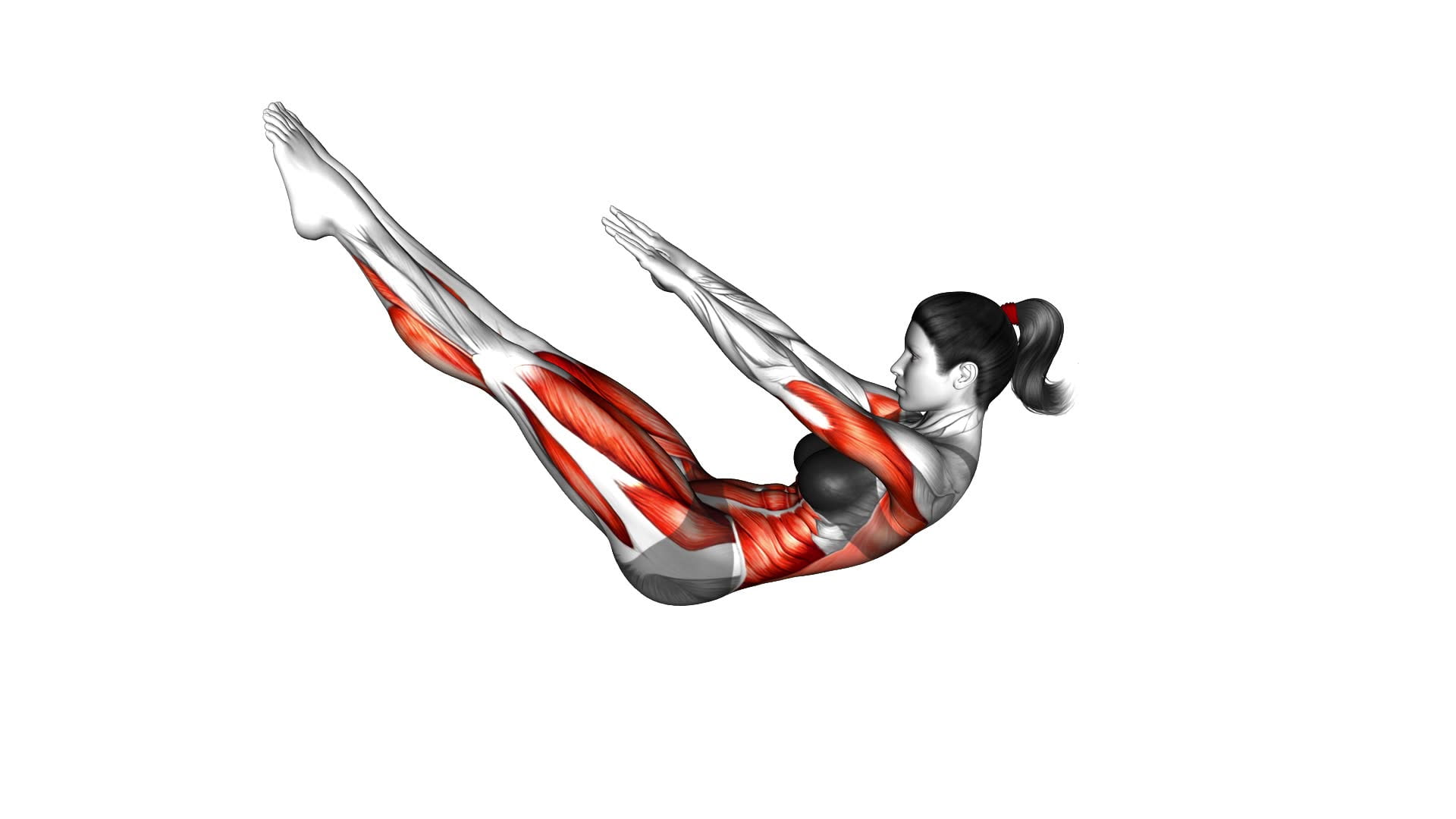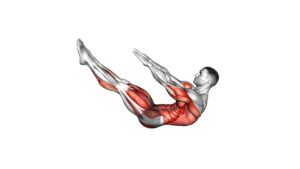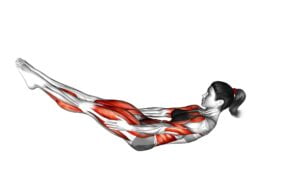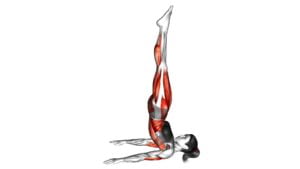Hundred – Video Exercise Guide & Tips

Get ready to tone your core and boost your fitness with the Hundred exercise!
Watch This Exercise Video
This video exercise guide and tips will show you the benefits, proper form, and modifications for different fitness levels.
Avoid common mistakes and discover tips for increasing intensity.
Whether you're a beginner or advanced, this article will help you incorporate the Hundred into your fitness routine for maximum results.
Let's get started!
Key Takeaways
- The Hundred exercise targets core muscles, specifically abdominals and lower back.
- Proper form and technique, including deep breathing and engaging core muscles, are essential in maximizing the benefits and preventing injuries.
- The exercise can be modified for different fitness levels, allowing beginners to start with bent knees and gradually progress to more challenging variations.
- Common mistakes to avoid include improper form, rushing through the exercise, holding breath, and failing to maintain proper alignment.
Benefits of the Hundred Exercise
Discover the numerous benefits you can gain from incorporating the Hundred exercise into your fitness routine.
The Hundred is a Pilates exercise that targets your core muscles, specifically the abdominals and the lower back. By practicing the Hundred regularly, you can strengthen your core, improve your posture, and increase your overall stability. This exercise also helps to develop a strong mind-body connection and enhances your body awareness.
One of the key benefits of the Hundred exercise is its ability to improve your core strength. By engaging your deep abdominal muscles, you can develop a strong and stable core, which is essential for maintaining proper posture and performing daily activities with ease. Additionally, the Hundred exercise can help to enhance your overall stability by targeting the muscles that support your spine.
Another advantage of the Hundred exercise is its versatility. There are various variations of this exercise that you can incorporate into your routine, depending on your fitness level and goals. For example, you can modify the exercise by using different props like resistance bands or stability balls to increase the challenge. You can also adjust the tempo and intensity of the exercise to suit your needs.
Incorporating the Hundred exercise into your fitness routine can provide you with numerous benefits. From improving your core strength and stability to increasing your body awareness, this exercise is a valuable addition to any workout regimen. With its versatility and ability to be modified, the Hundred exercise offers endless possibilities for challenging and engaging your muscles.
Proper Form and Technique
To perform the Hundred exercise effectively, it's crucial to maintain proper form and technique. Many individuals make common mistakes such as arching their back or lifting their shoulders.
Importance of Form
Maintaining proper form and technique is crucial for maximizing the benefits of the Hundred exercise. The importance of breathing and the role of core strength can't be emphasized enough.
When performing the Hundred, it's essential to focus on your breath, inhaling deeply through your nose and exhaling fully through your mouth. This helps oxygenate your muscles and increases your endurance.
Additionally, engaging your core muscles properly is vital for stability and control throughout the exercise. By activating your core, you protect your spine and improve your overall posture.
It's important to remember that correct form ensures that you're targeting the right muscles and avoiding unnecessary strain or injury.
Now, let's move on to some common technique mistakes to watch out for.
Common Technique Mistakes
To avoid common technique mistakes and ensure proper form and technique during the Hundred exercise, it's crucial that you pay attention to your breathing and engage your core muscles correctly. Correcting technique and avoiding mistakes will help you maximize the benefits of this exercise.
One common mistake is improper breathing. It's important to inhale deeply through your nose and exhale fully through your mouth while performing the Hundred.
Another mistake is failing to engage your core muscles. To do this exercise correctly, you need to actively pull your abdominal muscles in towards your spine, creating a strong and stable core.
Correcting Bad Technique
To ensure proper form and technique during the Hundred exercise, it's important that you continue to focus on correcting any bad technique mistakes, such as improper breathing and failure to engage your core muscles.
Correcting these mistakes will improve your technique and help you get the most out of the exercise.
When it comes to breathing, make sure you inhale deeply through your nose and exhale fully through your mouth. This will ensure that you're getting enough oxygen and activating your core muscles properly.
Additionally, it's crucial to engage your core muscles throughout the exercise. This means pulling your belly button in towards your spine and maintaining a strong, stable core.
Modifications for Different Fitness Levels
Adjust your workout routine based on your fitness level. It's important to modify your exercises to suit your current abilities, whether you're a beginner or an advanced fitness enthusiast. For beginners, modifications can help make exercises more accessible and prevent injury. If you're new to the Hundred exercise, you can start by bending your knees and keeping your feet on the ground. This reduces the intensity and allows you to focus on building core strength. As you progress, you can gradually straighten your legs and lift them off the ground for a more challenging workout.
On the other hand, if you're an advanced practitioner looking for a greater challenge, you can try adding variations to the Hundred exercise. For instance, you can extend your legs into a tabletop position, where your knees are bent at a 90-degree angle. This engages your core muscles even more and adds an extra level of difficulty. Additionally, you can use props such as a Pilates ball or resistance bands to intensify the exercise. These modifications help to continually challenge your body and prevent plateauing in your fitness journey.
Remember to listen to your body and make adjustments accordingly to ensure a safe and effective workout.
Common Mistakes to Avoid
To maximize the effectiveness of your Hundred exercise and prevent injury, it's important to be aware of common mistakes to avoid. By avoiding these mistakes, you can ensure that you're maximizing your results while minimizing the risk of injuries.
One common mistake to avoid is using improper form. It's important to maintain proper alignment throughout the exercise, with your shoulders, hips, and legs in a straight line. Avoid arching your back or letting your shoulders hunch up towards your ears. This will help to engage the correct muscles and prevent strain on your back and neck.
Another mistake to avoid is rushing through the exercise. The Hundred is meant to be a controlled and deliberate movement, with each breath and arm pump synchronized. Take your time and focus on maintaining the correct form and engaging your core muscles.
Additionally, avoid holding your breath during the exercise. Breathing is an important part of the Hundred, as it helps to engage your deep core muscles and maximize the effectiveness of the exercise. Remember to inhale deeply through your nose and exhale fully through your mouth as you pump your arms.
Tips for Increasing Intensity
To increase the intensity of your workouts, you can incorporate progressive overload techniques such as increasing weight or reps gradually over time.
Another effective method is to incorporate high-intensity interval training (HIIT) workouts into your routine, which involve alternating between intense bursts of exercise and short recovery periods.
Additionally, adding resistance training exercises to your workouts can help increase the intensity by challenging your muscles and promoting strength gains.
Progressive Overload Techniques
To increase the intensity of your workouts, try incorporating progressive overload techniques.
Progressive overload is the gradual increase in the stress placed on your muscles over time, which leads to muscle growth and strength gains.
There are several benefits of progressive overload, including improved muscle size, increased strength, and enhanced athletic performance.
To effectively implement progressive overload, you can use various progression strategies such as increasing the weight lifted, adding more repetitions, reducing rest time, or performing more challenging variations of an exercise.
These strategies ensure that your muscles are continually challenged and stimulated to adapt and grow.
Remember to progress gradually and listen to your body to avoid injuries.
HIIT Workouts for Intensity
To increase the intensity of your workouts and continue with the progressive overload techniques discussed earlier, incorporate HIIT workouts for a higher level of intensity.
HIIT, or High-Intensity Interval Training, involves short bursts of intense exercise followed by periods of rest or lower-intensity activity. This type of workout not only helps to burn more calories in a shorter amount of time but also provides numerous benefits.
HIIT workouts can improve cardiovascular fitness, increase metabolism, and enhance endurance. To further challenge yourself, try incorporating advanced HIIT exercises such as burpees, mountain climbers, or kettlebell swings. These exercises engage multiple muscle groups and require a higher level of strength and coordination.
Remember to warm up properly before starting any HIIT workout and listen to your body to avoid overexertion.
Incorporating Resistance Training
To increase the intensity of your workouts and continue with the progressive overload techniques discussed earlier, you can incorporate resistance training for added challenge and improved strength gains.
Resistance training involves using weights or resistance bands to work against your muscles, providing numerous benefits. It helps to increase muscle strength and tone, improve bone density, enhance joint stability, and boost metabolism.
Some of the best resistance training exercises include squats, deadlifts, lunges, bench press, shoulder press, and rows. These exercises target major muscle groups and can be modified to suit your fitness level.
Remember to start with lighter weights and gradually increase the resistance as you get stronger. Incorporating resistance training into your workouts will take your fitness journey to the next level.
Incorporating the Hundred Into Your Fitness Routine
Incorporate the Hundred into your fitness routine for a challenging core workout. This Pilates exercise offers numerous benefits and can be modified to suit different fitness levels.
Here are three ways to incorporate the Hundred into your routine:
- Start with the basics: Lie on your back with your knees bent and feet flat on the floor. Lift your head, neck, and shoulders off the ground, engaging your abdominal muscles. Extend your arms straight by your sides and begin pumping them up and down in a controlled motion while inhaling for five counts and exhaling for five counts. Repeat this for ten sets, totaling 100 pumps.
- Increase the challenge: Once you have mastered the basic version, you can progress by straightening your legs to a tabletop position. This adds more resistance to your core muscles, intensifying the workout.
- Modify as needed: If you find the exercise too challenging, you can modify it by bending your knees or placing your hands behind your head for additional support. Remember to listen to your body and work within your limits.
Incorporating the Hundred into your fitness routine will strengthen your core muscles, improve posture, and increase overall body awareness. Don't forget to consult with a fitness professional to ensure proper form and technique.
Frequently Asked Questions
How Many Times a Week Should I Do the Hundred Exercise?
To determine how many times a week you should do the hundred exercise, consider your fitness level and goals. As a general guideline, aim for 2-3 times a week. However, it's important to listen to your body and not overdo it.
If you're a beginner, start with fewer sets and gradually increase as you build strength. For modifications, beginners can try bending their knees or using a smaller range of motion.
Always consult with a professional if you have any concerns.
Can I Do the Hundred Exercise if I Have Lower Back Pain?
Yes, you can still do the Hundred exercise even if you have lower back pain. However, it's important to modify the exercise to avoid exacerbating your pain.
There are several modifications you can try, such as using a smaller range of motion or placing a cushion under your lower back for support.
The Hundred exercise is beneficial for core strength as it targets the abdominal muscles and helps improve stability and posture.
How Long Should I Hold Each Breath During the Hundred Exercise?
To properly perform the Hundred exercise, it's important to focus on your breathing technique. Controlled breathwork during this exercise can provide numerous benefits.
But before we get into the specifics of how long you should hold each breath, let's first understand the importance of proper breathing and the advantages it offers.
Can I Do the Hundred Exercise if I'm Pregnant?
Yes, you can still do the Hundred exercise if you're pregnant, but there are some modifications you should make. It's important to listen to your body and consult with your doctor or a prenatal fitness specialist.
Consider decreasing the range of motion and intensity, and avoid lying flat on your back after the first trimester.
There are also alternative exercises, such as modified crunches or seated exercises, that can help you maintain your fitness during pregnancy.
Is It Normal to Feel Neck Strain During the Hundred Exercise?
Feeling neck strain during the hundred exercise is fairly common. It may be due to improper neck alignment. Make sure your neck is in a neutral position, not straining forward or backward.
If you're a beginner, modifications can help alleviate strain. You can try placing a small towel or cushion under your head for support. Remember to focus on engaging your core and breathing properly throughout the exercise.
Conclusion
In conclusion, the Hundred exercise is a beneficial and versatile workout that can be modified to suit different fitness levels.
By maintaining proper form and technique, avoiding common mistakes, and gradually increasing intensity, you can maximize the benefits of this exercise.
Incorporating the Hundred into your fitness routine can help improve core strength, stability, and overall fitness.
So, give it a try and experience the positive impact it can have on your body.

Author
Years ago, the spark of my life’s passion ignited in my mind the moment I stepped into the local gym for the first time. The inaugural bead of perspiration, the initial endeavor, the very first surge of endorphins, and a sense of pride that washed over me post-workout marked the beginning of my deep-seated interest in strength sports, fitness, and sports nutrition. This very curiosity blossomed rapidly into a profound fascination, propelling me to earn a Master’s degree in Physical Education from the Academy of Physical Education in Krakow, followed by a Sports Manager diploma from the Jagiellonian University. My journey of growth led me to gain more specialized qualifications, such as being a certified personal trainer with a focus on sports dietetics, a lifeguard, and an instructor for wellness and corrective gymnastics. Theoretical knowledge paired seamlessly with practical experience, reinforcing my belief that the transformation of individuals under my guidance was also a reflection of my personal growth. This belief holds true even today. Each day, I strive to push the boundaries and explore new realms. These realms gently elevate me to greater heights. The unique combination of passion for my field and the continuous quest for growth fuels my drive to break new ground.







